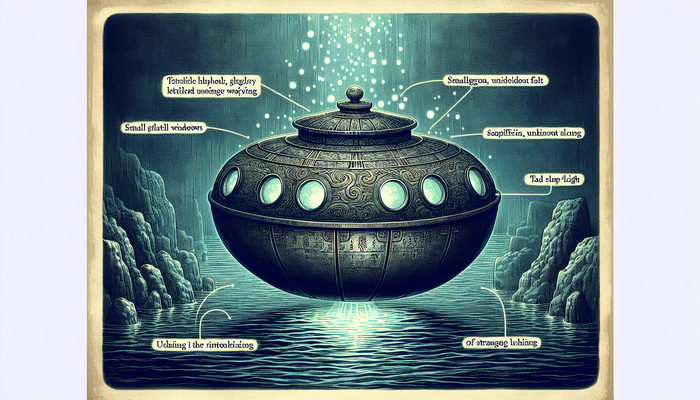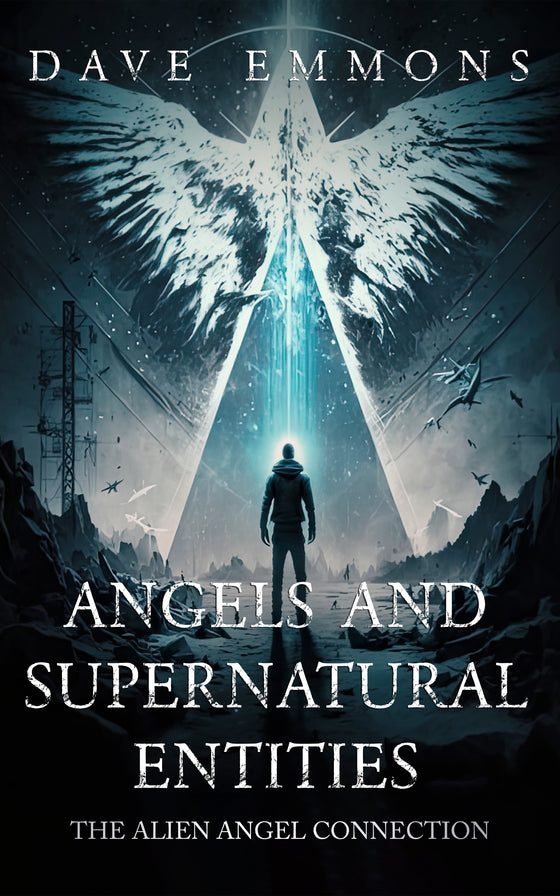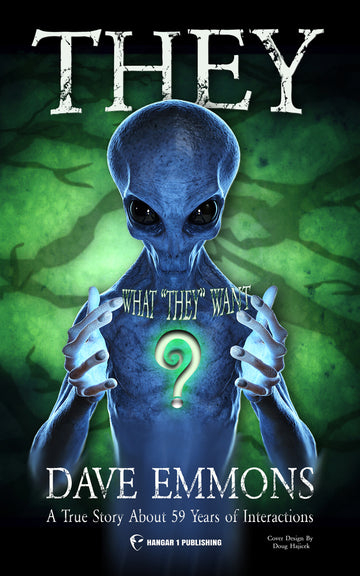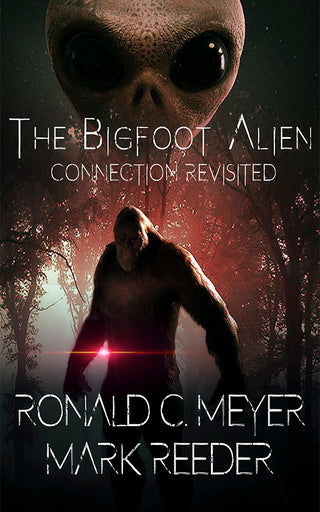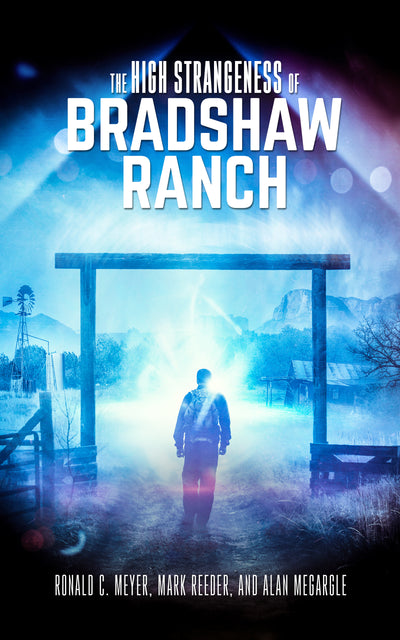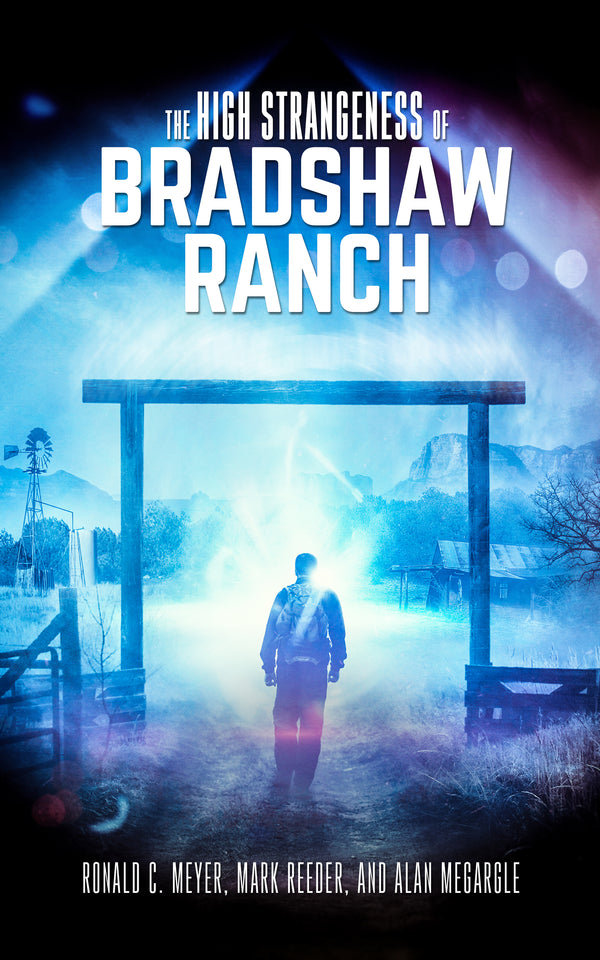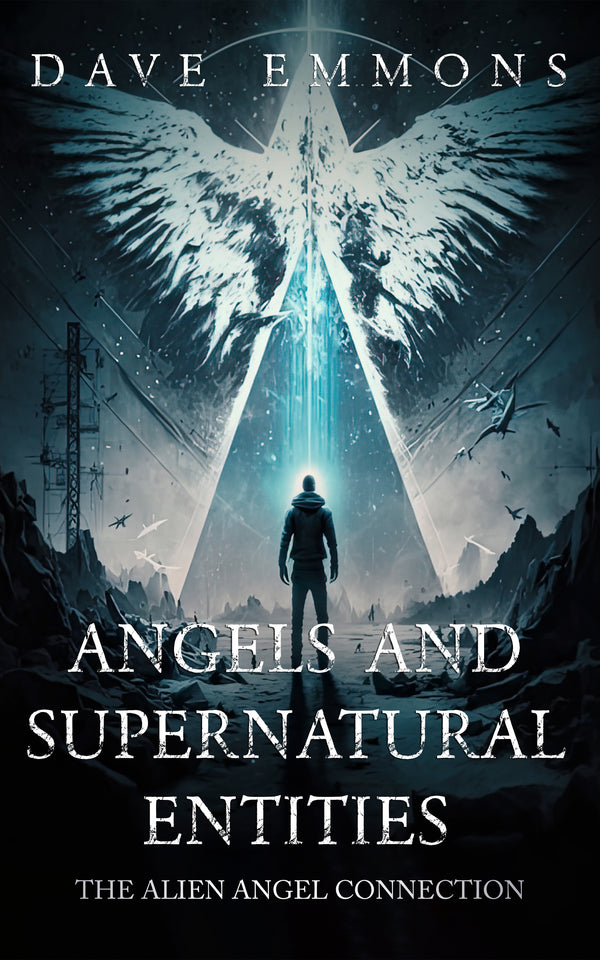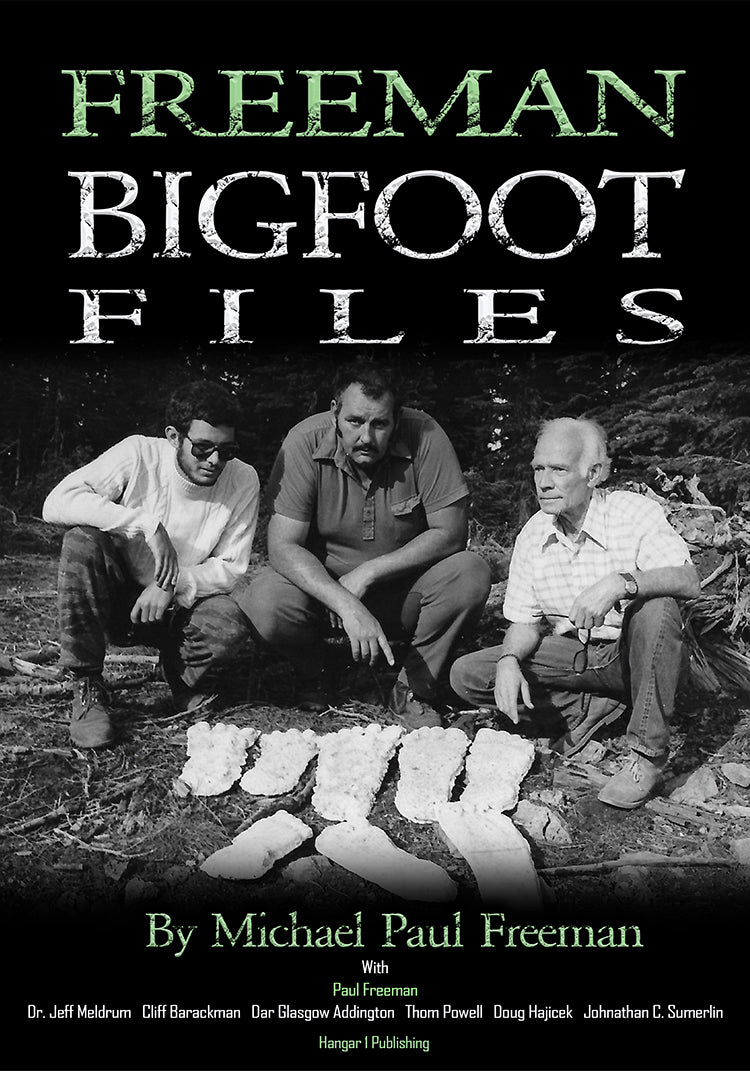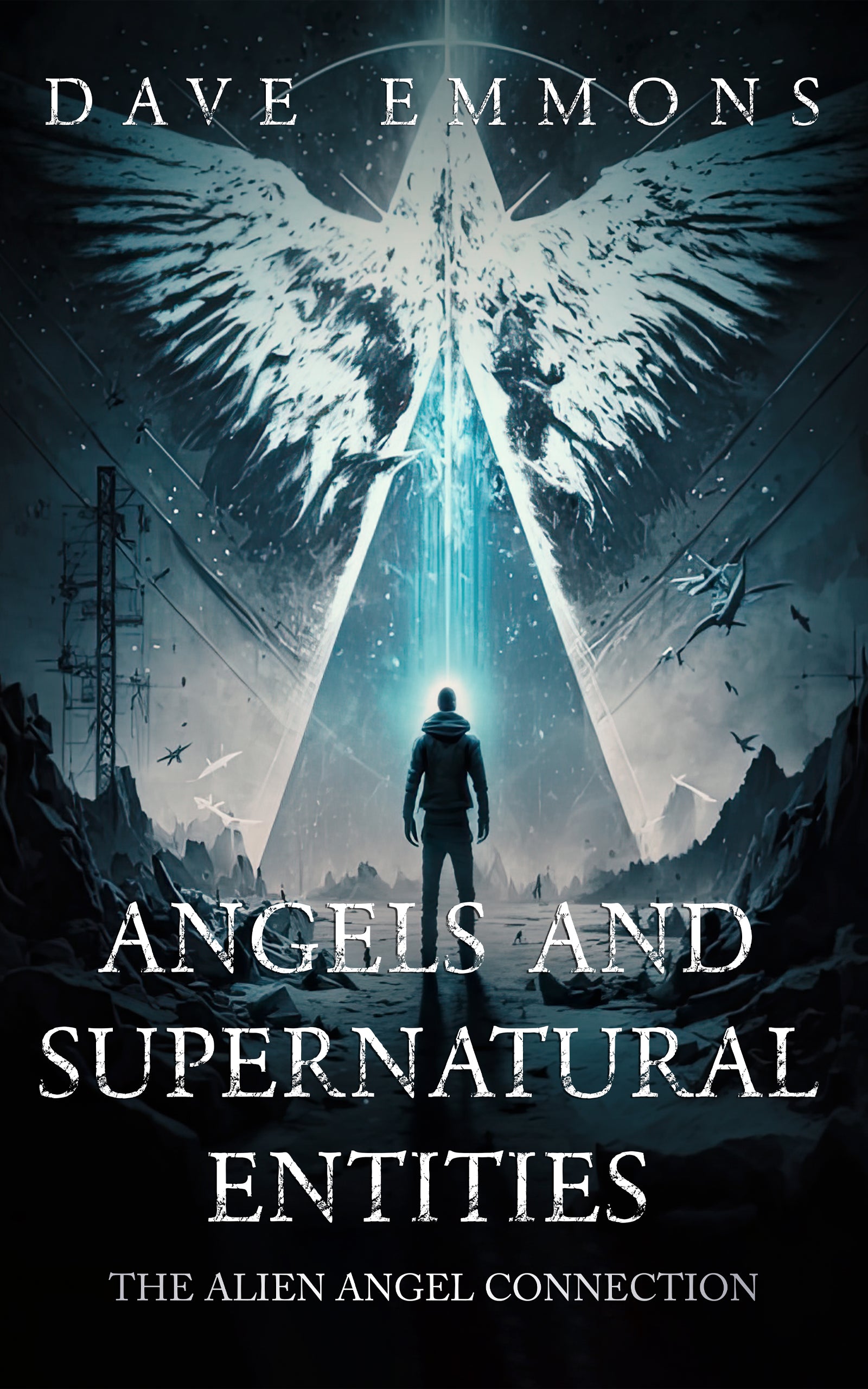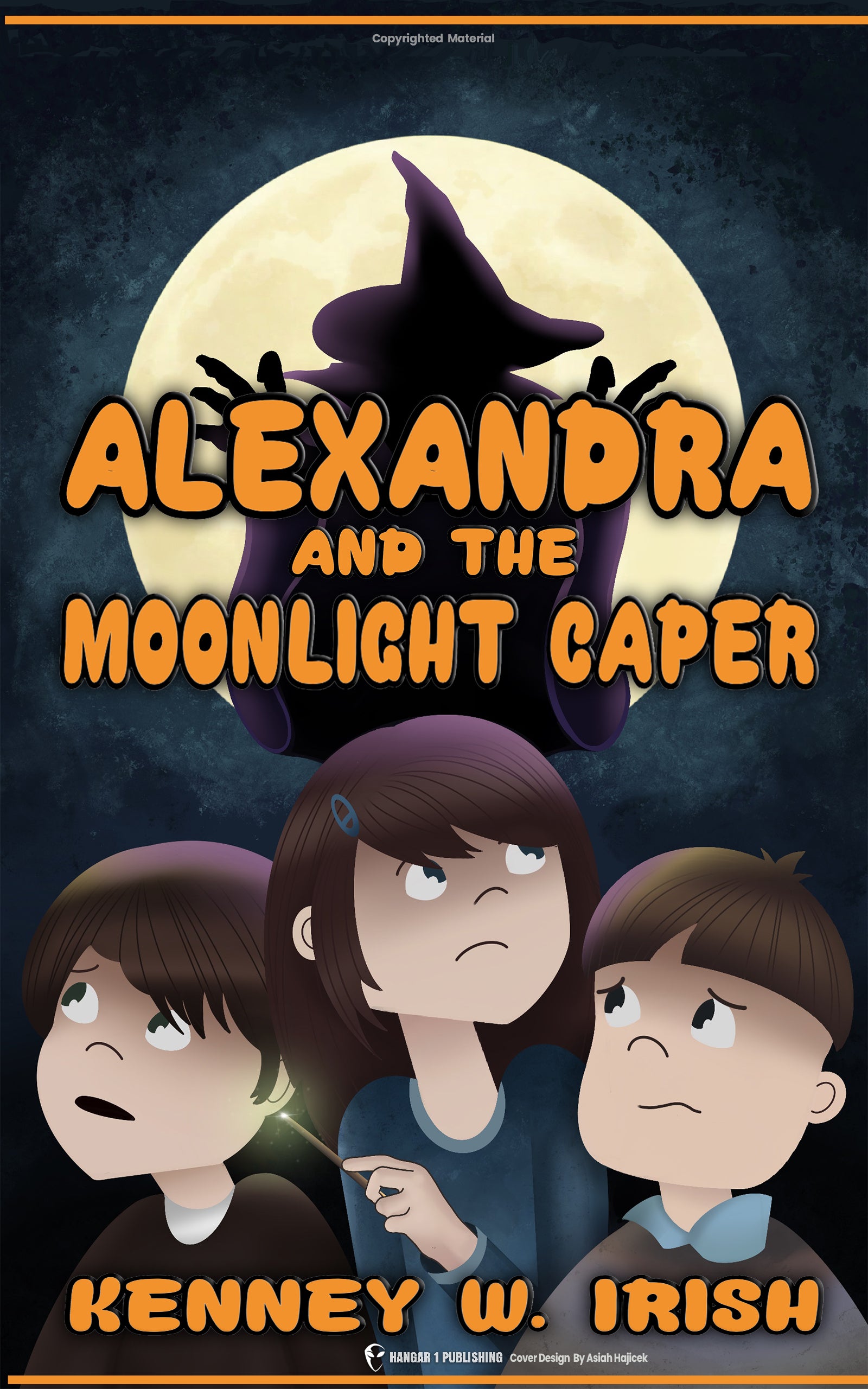Exploring Abduction Hypnosis and Alien Encounters

By Gabriel Chen, Ufologist
Introduction: The Unseen Doorway to the Impossible
Imagine driving home on a dark, deserted highway, the moon bright, the radio playing softly. Then, a strange light appears, maneuvers impossibly, and suddenly, hours vanish from your life. You arrive home, shaken, clothes torn, shoes scuffed, with no memory of the intervening time, only a gnawing sense of dread laced with fragmented, disturbing images. This unsettling scenario, echoing the foundational experience of Betty and Barney Hill in 1961, marks the entry point into the perplexing world of alleged alien abductions for many. It's a world characterized by profound trauma, bewildering gaps in memory, and an overwhelming search for answers.
These experiences often leave individuals feeling isolated, grappling with anxieties and symptoms—nightmares, unexplained marks, sudden phobias—that defy conventional explanation. Mental health professionals may offer diagnoses, but for some "experiencers," these labels feel insufficient, failing to capture the sheer strangeness of what they sense occurred. It's in this crucible of confusion and isolation that many turn towards a controversial yet frequently sought-after tool: Abduction Hypnosis.
Presented as a key to unlock buried memories, hypnotherapy, specifically hypnotic regression, is employed to navigate the fog of "missing time" and piece together fragmented recollections. Proponents believe it allows direct access to subconscious memories of encounters with non-human intelligences, bypassing conscious filters or even alleged alien-induced amnesia. Critics, however, warn of the perilous paths of suggestibility and false memory creation inherent in the process. Does this practice illuminate genuine, hidden encounters with otherworldly beings, or does it inadvertently construct elaborate narratives born from the depths of the human psyche, influenced by culture and trauma? We will explore the history, methodology, profound claims, and troubling controversies surrounding abduction hypnosis, examining its complex role within the persistent narrative of alien encounters.
The Call for Memory: Why Individuals Seek Abduction Hypnosis
The journey into abduction hypnosis often begins not with a clear memory, but with a void – the perplexing and deeply unsettling awareness of "missing time." Driving home might take hours longer than it should, leaving a gaping hole in recall. As Betty and Barney Hill discovered, this missing time isn't just a curiosity; it's a psychic wound demanding explanation. What happened in those lost hours? This question becomes an obsessive pursuit for many.
Alongside missing time, other strange breadcrumbs often lead individuals to seek hypnotic exploration. Disturbing nightmares, far too vivid and visceral to be dismissed as mere dreams, plague their sleep. Betty Hill’s nightmares following her 1961 experience were key drivers in seeking help. Fleeting, fragmented images or sounds flash through the mind during waking hours – a glimpse of a large, dark eye, a snippet of humming sound, a feeling of paralysis. The body, too, might bear witness: unexplained bruises appear, odd scoop marks or triangular patterns are found on the skin, or a persistent, localized pain lingers without a medical cause. Barney Hill’s scuffed shoes and torn binocular strap, Betty’s ripped dress – these seemingly minor details become significant clues pointing towards an unremembered event.
Beyond the physical, inexplicable phobias can suddenly manifest – a sudden terror of owls, deer, doctor's offices, or even specific visual patterns. Underlying it all is often a powerful, pervasive feeling that something happened, something profound and possibly violating, coupled with a frustrating inability to grasp or articulate it. This dissonance can lead to significant psychological distress: anxiety, panic attacks, depression, insomnia, and obsessive behaviors. As described in research on Post-Abduction Syndrome (PAS), individuals may feel alienated from themselves, struggling with dissociation or a numbing of emotions.
Facing skepticism from friends, family, and even medical professionals only deepens the isolation. Many seeking help report feeling dismissed or pathologized, with some even stating they'd rather be seen as mentally unbalanced than have their experiences invalidated. In this context, abduction hypnosis emerges not necessarily as a first choice, but often as a last resort—a potential pathway to understanding, healing, and perhaps, validation. It represents a hope for retrieving the missing pieces, for constructing a coherent narrative out of baffling fragments, and ultimately, for finding relief from the haunting ambiguity.
Pioneers and Practitioners: Figures Shaping Abduction Hypnosis
The landscape of abduction hypnosis has been significantly shaped by a few key figures who brought the practice into the public eye and developed specific methodologies, often amidst considerable controversy.
Budd Hopkins
Budd Hopkins, an artist turned UFO researcher, stands out as a foundational figure. Beginning in the 1970s, Hopkins became deeply invested in abduction reports, particularly those involving "missing time." He fervently believed that hypnosis was not just helpful, but essential for retrieving memories he theorized were deliberately blocked by aliens. Through books like "Missing Time" and "Intruders" (later a TV miniseries), Hopkins popularized many core elements of the modern abduction narrative, including the focus on reproductive procedures and hybrid beings, largely based on accounts elicited through hypnosis. He established support groups and positioned himself as a central hub for abductees, advocating for the reality of their experiences based on the consistency he observed in hypnotically retrieved accounts.
Dr. John E. Mack
Perhaps the most academically credentialed proponent was the late Dr. John E. Mack. A professor of psychiatry at Harvard Medical School and a Pulitzer Prize-winning biographer, Mack's involvement lent significant, albeit controversial, weight to abduction claims. Initially skeptical, Mack became convinced of the phenomenon's authenticity after interviewing hundreds of "experiencers" starting in the late 1980s. He employed hypnosis as part of his therapeutic work, concluding that his patients were sane individuals recalling genuinely traumatic, albeit inexplicable, events. Mack argued forcefully that the consistency, emotional power, and detail of these accounts defied conventional psychological explanations. His stance led to a formal inquiry by Harvard in 1994, though he ultimately retained tenure. Mack emphasized the profound, often spiritually transformative, impact these experiences had on individuals, suggesting they might challenge our fundamental understanding of reality.
Yvonne Smith
Yvonne Smith represents a dedicated clinical hypnotherapist who built her practice specifically around alleged alien abduction cases. Certified in the early 1990s, she founded the Close Encounter Resource Organization (CERO), providing support groups and individual hypnotherapy sessions. Smith has worked with hundreds of clients, often referred by physicians and psychologists. Like Hopkins and Mack, she highlights the striking similarities in narratives recalled under hypnosis by people from vastly different backgrounds who have never met. Her work, detailed in her book "Chosen: Recollections Of UFO Abductions Through Hypnotherapy," focuses on helping individuals cope with the PTSD-like symptoms resulting from their perceived encounters.
Laurie McDonald
Adding a contemporary voice is Laurie McDonald, another clinical hypnotherapist specializing in abduction regression. With reported experience involving over a thousand cases, McDonald integrates modern concerns, even using apps to detect potential hidden surveillance during sessions with high-profile clients. She speaks internationally on the topic and works to create "psychological profiles" of the different types of entities described by experiencers during regression, reinforcing the idea of distinct alien races (Grays, Reptilians, Mantis beings, etc.) involved in the phenomenon.
It's crucial to note, however, that the field includes not just licensed therapists but also self-proclaimed "UFO Investigators" who utilize hypnosis. As David Jacobs, another prominent abduction researcher who uses hypnosis, has acknowledged, there is often "no systematic training" specifically for this niche application. This lack of standardization means methodologies can vary significantly, raising further questions about the consistency and reliability of the "memories" retrieved.
The Hypnotic Journey: Accessing the Depths of Memory
Embarking on a hypnotic regression session aimed at uncovering abduction memories typically involves a structured process designed to relax the conscious mind and facilitate access to deeper levels of awareness. The setting is usually calm and controlled, perhaps an office like Yvonne Smith's, where the therapist aims to create a safe and reassuring atmosphere.
The process often begins with guided relaxation techniques. The therapist, adopting a calm and pleasant demeanor, might instruct the individual to focus on their breathing, inhaling deeply and exhaling slowly, releasing tension with each breath. Imagery is frequently employed – picturing a peaceful waterfall, descending a metaphorical staircase step-by-step, or arriving in a tranquil, safe personal space. The hypnotherapist's voice acts as a guide, encouraging the individual to sink deeper into a relaxed, focused, trance-like state. As one practitioner puts it, tension melts away "like warm wax over the edge of a burning candle."
Once a sufficient depth of hypnosis is achieved – a state characterized by heightened focus and suggestibility – the therapist gently guides the individual's recall. They might direct the person back to the specific time period where memory seems fragmented or missing, or towards the feelings and sensations associated with the inexplicable event. Prompts are crucial here: "Describe what you see or hear," "What are your feelings right now?", "Tell me what happens next." The therapist encourages the subject to "just let it flow, even if it sounds weird."
During this phase, fragmented sensations, fleeting images, and disconnected feelings often begin to surface. Hypnotherapy aims to help the individual organize these pieces, allowing a more coherent narrative to emerge from the subconscious. It's described as accessing and processing subconscious memories, allowing them to rise to conscious awareness.
Crucially, this process is often accompanied by intense emotional release, known as catharsis. As the narrative unfolds, individuals may re-experience the terror, fear, pain, or sense of violation associated with the alleged events. Recordings of sessions, like those from the Betty and Barney Hill case or those played by Yvonne Smith (with permission), reveal subjects weeping, gasping, and expressing profound distress as they seemingly relive traumatic moments. This intense emotional reaction is often cited by proponents as evidence for the authenticity of the underlying experience, arguing that such powerful feelings wouldn't accompany mere fantasy. However, critics point out that strong emotions can also be associated with vividly imagined scenarios or falsely recalled events, especially under the influence of suggestion.
Unveiling the Narrative: Common Themes in Hypnotic Recollections
As individuals journey through hypnotic regression, remarkably consistent themes and sequences tend to emerge across different accounts, forming what might be called the classic abduction narrative. While variations exist, the core elements appear with striking regularity.
The Beginning of the Experience
The experience often begins subtly, perhaps with an unusual feeling or a compulsive urge to be somewhere specific. Then comes the “Oz Factor,” a shift in consciousness where the surrounding world fades, replaced by an internal focus, sometimes accompanied by strange lights (electric red, bright white, or blue) or a mist. Paralysis frequently sets in, rendering the individual unable to move or scream. Figures then appear – often the small, large-headed Grays with their unnerving, dark, almond-shaped eyes. Reports describe being moved, either walking numbly or being levitated, sometimes passing through solid objects like walls or windows, often drawn upwards by a beam of light into an unseen craft.
Inside the Craft and the Examination
Inside the vessel, descriptions commonly include sterile, metallic environments, often with curved hallways and unusual, shadowless illumination, sometimes described as blue or fluorescent. The centerpiece of the narrative is almost invariably the medical examination. Placed upon a cold table, often nude, the abductee reports being subjected to invasive procedures by beings who exhibit a cold, clinical detachment. There's a distinct focus on reproductive biology: men describe painful probing, sperm extraction, and sometimes having instruments inserted into them, occasionally leaving marks like triangular scoops. Women recount gynecological exams, ovum extraction, and terrifyingly, the insertion of long, needle-like instruments into their navel, as Betty Hill vividly described – an experience so traumatic her session had to be stopped. The beings often seem unfamiliar with human physiology or clothing, struggling with zippers, yet carrying out complex procedures.
Other Interactions and Communication
Beyond the core exam, other strange interactions are reported. "Imaging" involves being shown scenes on screens designed to evoke strong emotions – Whitley Strieber recalled seeing images of global destruction. "Envisioning" projects similar scenes directly into the mind. In "staging," the abductee interacts within these mental projections. "Testing" involves operating complex alien devices, finding they instinctively know how, despite initial confusion. Communication is rarely verbal in the human sense; instead, it's often telepathic – a direct mind-to-mind transfer, sometimes perceived as a cacophony of voices or a "hive mind." Messages conveyed might include warnings about environmental destruction or nuclear war, prophecies of future cataclysms (a theme Yvonne Smith noted increasing in recent years), or assignments for the abductee, positioning them as unwilling ambassadors or participants in an alien agenda.
The Hybrid Program
One of the most disturbing and emotionally charged elements is the "hybrid program." Both male and female abductees report being used for reproductive purposes. Later, they might be presented with children – beings appearing part-human, part-alien (often described as having features similar to the abductee but with large, Grey-like eyes or fair hair). This "child presentation" evokes profound feelings of connection, loss, and grief, with experiencers like Jacqueline lamenting, "Where's my baby?"
The Return
The return is often as abrupt as the departure. Abductees find themselves back where they started, often with no conscious memory of the event, only the jarring realization of "missing time." Sometimes, small errors occur – clothes are on backward, or they are returned to a different location, even locked outside their own home. Paradoxically, alongside the trauma, some report a "theophany" upon return – an overwhelming feeling of love, peace, or oneness with the universe or even their captors, a phenomenon researchers struggle to explain, suggesting possibilities from medical manipulation to a form of Stockholm Syndrome. This complex tapestry of events, recalled under hypnosis, forms the core of the abduction mystery.
The Psychological Puzzle: Decoding Hypnotic Abduction Accounts
While the narratives emerging from abduction hypnosis can be compellingly consistent and emotionally charged, the scientific and psychological communities largely approach them with significant skepticism, offering alternative explanations rooted in the known workings of the human mind and memory.
Memory Malleability and Suggestibility
Central to this skepticism is the understanding that human memory is not a perfect recorder. It's reconstructive, malleable, and highly susceptible to distortion, especially under stress, trauma, or suggestive influences. Psychologist Elizabeth Loftus's groundbreaking work demonstrated that false memories, even of complex and emotional events like being lost in a shopping mall, can be implanted through suggestion. This raises serious questions about memories retrieved under hypnosis, a state known to significantly increase suggestibility. Critics argue that hypnotists, even well-intentioned ones, can subtly or overtly guide the subject, embedding ideas or shaping ambiguous feelings into a coherent, but potentially false, abduction narrative. The subject, eager to find answers or please the authority figure, may confabulate – filling in memory gaps with plausible-sounding details drawn from imagination or cultural scripts.
Sleep Paralysis and Hallucinations
A powerful alternative explanation for many abduction experiences, particularly those described as starting in bed at night, is the combination of sleep paralysis and hypnagogic or hypnopompic hallucinations. During sleep paralysis, the mind wakes up while the body remains temporarily immobilized – a natural mechanism to prevent acting out dreams. This state can be accompanied by vivid, often terrifying hallucinations: seeing figures in the room (historically interpreted as demons like the Incubus/Succubus or the "Old Hag"), hearing buzzing sounds, feeling pressure on the chest, sensing a presence, or experiencing sensations of floating or flying. For someone unfamiliar with this common neurological hiccup, especially if they possess a vivid imagination or pre-existing belief in the paranormal, these sensations could easily be interpreted as an alien encounter. Harvard researcher Richard McNally's work suggests abductees often exhibit traits like fantasy proneness and "magical ideation," making them potentially more likely to interpret anomalous experiences in extraordinary ways.
Cultural Influence
The pervasive influence of culture cannot be ignored. Skeptics like Robert Sheaffer point out that the appearance and behavior of reported aliens often mirror depictions in science fiction, from early films like Invaders From Mars (1953) to the iconic "Grey" popularized through books and shows like The X-Files. The details of the Betty and Barney Hill account itself have been noted to resemble elements from an episode of The Outer Limits broadcast shortly before their hypnosis sessions. Furthermore, abduction narratives seem to shift with cultural knowledge; initial reports featured Martians and Venusians, but as science deemed those planets uninhabitable, the claimed origins shifted to more distant star systems. This suggests the narratives draw heavily from a shared cultural pool of ideas about extraterrestrials.
Accidental Awareness Under Anesthesia
A more recent and fascinating hypothesis links some abduction accounts to "accidental awareness under general anesthesia." Psychoanalyst David V. Forrest noted the striking parallels: the subject lying on a table, bright lights overhead, masked figures (surgeons/nurses) looming, invasive procedures, feelings of paralysis and terror, and strange bodily sensations. A traumatic experience of waking during surgery, perhaps partially recalled or distorted by anesthetic drugs, could potentially be reconstructed later, possibly under hypnosis, as an alien abduction memory. Barney Hill, under hypnosis, even compared the feeling of being probed to a prior tonsillectomy, noting the coldness and his closed eyes.
Ultimately, the skeptical perspective argues that abduction hypnosis doesn't retrieve objective memories of extraterrestrial encounters but rather facilitates the construction of narratives based on suggestibility, false memory, misinterpretations of natural phenomena like sleep paralysis, personality factors, and powerful cultural influences.
The Human Impact: Trauma, Healing, and Community
Regardless of whether alien abductions are objectively real physical events, the psychological impact on those who believe they have experienced them is undeniable and often profound. Many report symptoms consistent with significant trauma, leading to the informal designation "Post-Abduction Syndrome" (PAS) within the experiencer community. This cluster of symptoms, as described by researchers like Rick Nielsen and Rose Hargrove, mirrors Post-Traumatic Stress Disorder (PTSD) – persistent intrusive memories or flashbacks, nightmares, insomnia, hypervigilance, anxiety, panic attacks, depression, emotional numbing, and avoidance of stimuli associated with the perceived event. The key difference highlighted is that alleged abductions can be recurring, making it harder to pinpoint a single originating trauma.
Crucially, research has shown that the trauma experienced is physiologically real. Studies conducted by researchers like Richard McNally at Harvard, using measures like heart rate and skin conductance while subjects listened to scripts of their abduction accounts, found that the physiological responses were as intense, or even more so, than those of combat veterans or victims of sexual assault recalling their verified traumas. This underscores a critical point: the emotional distress and psychological suffering are genuine, even if the underlying memory is contested. As McNally noted, it highlights "the power of emotional belief."
Given this real suffering, the role of abduction hypnosis becomes complex. While heavily criticized as a potential source of false memories, some proponents and even some experiencers view it as a therapeutic tool. For individuals tormented by inexplicable anxiety, physical symptoms, or fragmented memories, the hypnotic process – even if it leads to a narrative deemed false by outsiders – can provide a sense of understanding, coherence, and control. Constructing a story, any story, can sometimes be preferable to living with terrifying ambiguity. Some individuals report significant relief after hypnotherapy, experiencing reduced anxiety, better sleep, and the ability to integrate the perceived experience into their lives, finally feeling they understand what happened to them.
Beyond individual therapy, the sense of community offered by support groups, like Yvonne Smith's CERO, plays a vital role. Alien abductees frequently face disbelief and ridicule, leading to profound isolation. These groups offer a haven where experiences can be shared without judgment, providing validation and mutual support. Hearing similar stories from others can lessen the sense of being alone or "crazy." This communal reinforcement is essential for coping, though critics also point out that such environments can potentially solidify or elaborate upon potentially false narratives through group dynamics.
For some, navigating these experiences, whether through hypnosis, support groups, or personal reflection, leads to a shift in identity. They may come to see themselves as "experiencers," individuals chosen for contact, perhaps even imbued with a unique purpose or insight, sometimes related to reported alien warnings about the planet's future. While fraught with challenges, the journey for some involves finding a way to live with these extraordinary beliefs and integrate them into a meaningful life narrative.
The Ongoing Debate: Science, Belief, and the Unknown
Decades after the Betty and Barney Hill case brought alien abduction into the mainstream, the phenomenon, and the use of hypnosis to explore it, remains deeply contentious. The core tension lies between the rigorous demands of scientific methodology and the powerful, subjective reality reported by experiencers. Science, prioritizing empirical evidence and testable hypotheses, largely favors psychological and neurological explanations – false memory, suggestibility, sleep paralysis, cultural scripting, misinterpretation of mundane events. The lack of consistent, verifiable physical evidence (like unambiguously non-terrestrial implants) remains a significant hurdle for literal interpretations.
Yet, for those who undergo these experiences, the memories – whether accessed consciously or through hypnosis – often feel profoundly real, accompanied by genuine emotional and physiological trauma. Researchers sympathetic to experiencers, like the late John Mack, argued that simply dismissing these accounts as purely psychological phenomena failed to address the full scope of the reported experiences – the consistency across cultures, the occurrence in young children seemingly unexposed to media tropes, the occasional correlation with contemporaneous UFO sightings by others, and the sheer transformative power of the events on individuals' lives. Mack suggested that the phenomenon might force us to reconsider our very definitions of reality, proposing that these encounters could occur in a liminal space not fully captured by conventional physics or psychology.
The debate is unlikely to be resolved soon. Abduction hypnosis sits squarely at the nexus of this conflict. Is it a tool capable of piercing amnesia, revealing interactions that defy our current understanding of the cosmos? Or is it a process that, interacting with belief, trauma, and the inherent suggestibility of the human mind, constructs convincing facsimiles of impossible experiences? Without definitive proof either way, the interpretation often hinges on pre-existing beliefs.
What remains clear is that the alien abduction narrative, often brought into focus through the lens of hypnosis, taps into deep-seated human anxieties about violation, control, identity, and our place in a vast, unknown universe. It challenges our understanding of memory, consciousness, and the boundaries of believable experience, leaving us face-to-face with an enduring, and for many, deeply personal, mystery.
Additional Resources and Support
For individuals seeking further information or support related to experiences discussed in this article, the following resources (mentioned in the research) may be starting points, though critical evaluation is always advised:
- Close Encounter Resource Organization (CERO): Founded by Yvonne Smith, provides support groups.
- Online communities and forums: Numerous online groups exist for experiencers to connect (examples provided in source links like crystalinks.com/support., abduct.com/support.php, etc., though link validity may vary over time).
- Books by researchers: Works by Budd Hopkins, John Mack, David Jacobs, Yvonne Smith, and Thomas E. Bullard offer detailed perspectives, though often reflecting the author's specific viewpoint.
- Skeptical resources: Organizations and publications dedicated to critical thinking and scientific skepticism often analyze abduction claims (e.g., Committee for Skeptical Inquiry, Skeptic magazine, Skeptoid podcast).
From Bigfoot to UFOs: Hangar 1 Publishing Has You Covered!
Explore Untold Stories: Venture into the world of UFOs, cryptids, Bigfoot, and beyond. Every story is a journey into the extraordinary.
Immersive Book Technology: Experience real videos, sights, and sounds within our books. Its not just reading; its an adventure.



